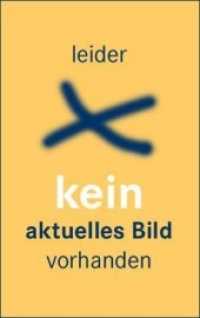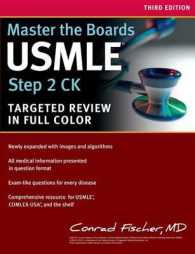基本説明
This book, a first in its kind, offers a survey of the present state of affairs in media accessibility research and practice.
Full Description
This book, a first in its kind, offers a survey of the present state of affairs in media accessibility research and practice. It focuses on professional practices which are relative newcomers within the field of audiovisual translation and media studies, namely, audio description for the blind and visually impaired, sign language, and subtitling for the deaf and the hard-of-hearing for television, DVD, cinema, internet and live performances.
Thanks to the work of lobbying groups and the introduction of legislation in some countries, media accessibility is an area that has recently gained marked visibility in our society. It has begun to appear in university curricula across Europe, and is the topic of numerous specialised conferences.
The target readership of this book is first and foremost the growing number of academics involved in audiovisual translation at universities - researchers, teachers and students - but it is also of interest to the ever-expanding pool of practitioners and translators, who may wish to improve their crafts. The collection also addresses media scholars, members of deaf and blind associations, TV channels, and cinema or theatre managements who have embarked on the task of making their programmes and venues accessible to the visually and hearing impaired.
Contents
Acknowledgements
Jorge DÍAZ CINTAS, Pilar ORERO, Aline REMAEL: Media for all: a global challenge
Section 1: Subtitling for the deaf and hard-of-hearing (SDH)
Aline REMAEL: Sampling subtitling for the deaf and the hard-of-hearing in Europe
Clive MILLER: Access symbols for use with video content and information and communications technology devices
Christopher STONE: Deaf access for Deaf people: the translation of the television news from English into British Sign Language
Josélia NEVES: A world of change in a changing world
Vera Lúcia SANTIAGO ARAÚJO: Subtitling for the deaf and hard-of-hearing in Brazil
Section 2: Audio description (AD)
Pilar ORERO: Sampling audio description in Europe
Joan GREENING, Deborah ROLPH: Accessibility: raising awareness of audio description in the UK
Gert VERCAUTEREN: Towards a European guideline for audio description
Andrew SALWAY: A corpus-based analysis of audio description
Julian BOURNE, Catalina JIMÉNEZ HURTADO: From the visual to the verbal in two languages: a contrastive analysis of the audio description of The Hours in English and Spanish
Karin De COSTER, Volkmar MÜHLEIS: Intersensorial translation: visual art made up by words
Anna MATAMALA, Pilar ORERO: Accessible opera in Catalan: opera for all
Greg YORK: Verdi made visible: audio introduction for opera and ballet
Jessica YEUNG: Audio description in the Chinese world
Notes on contributors
Index







